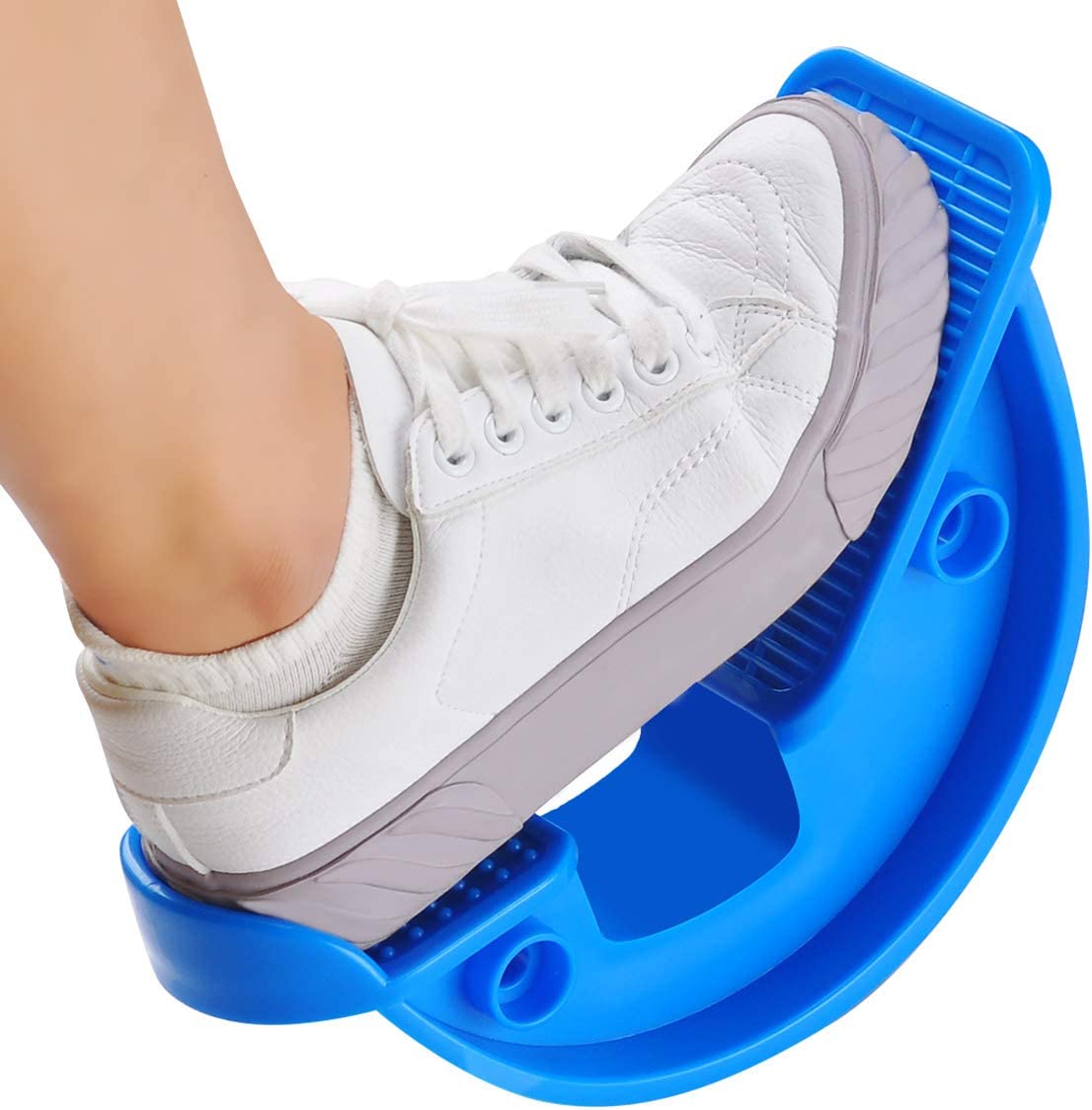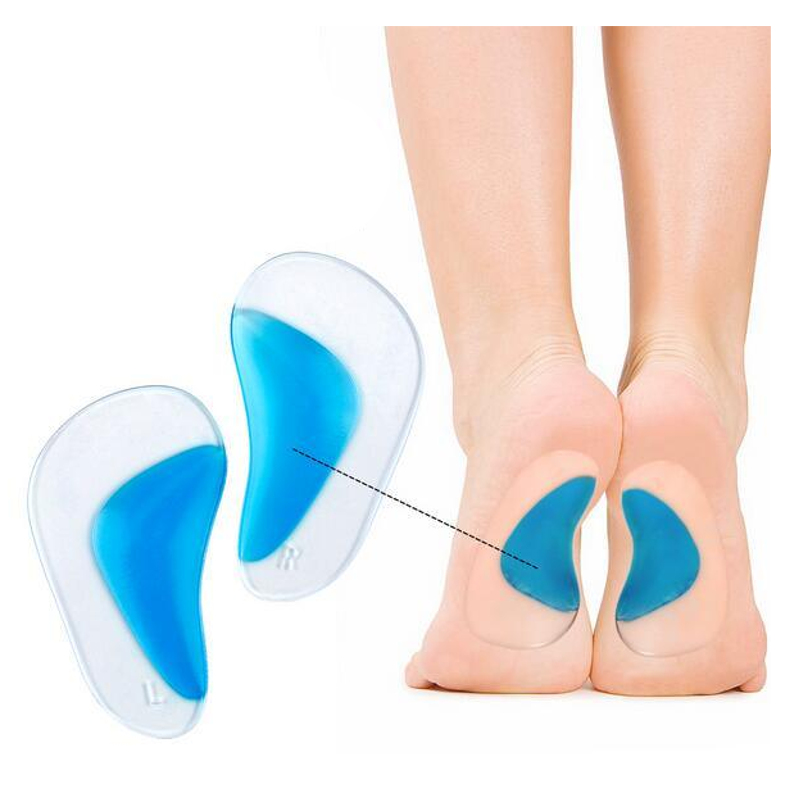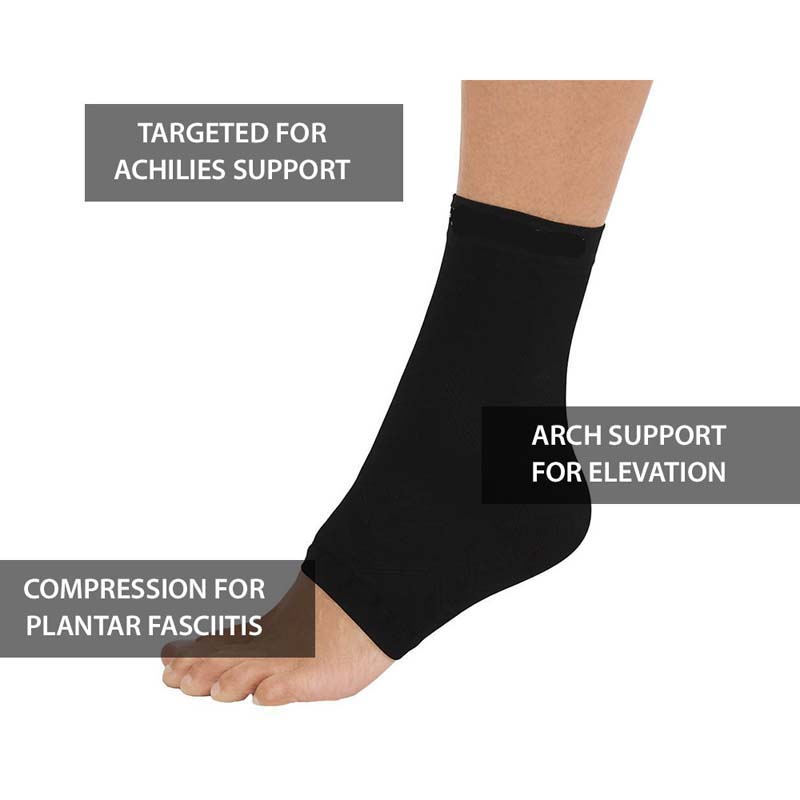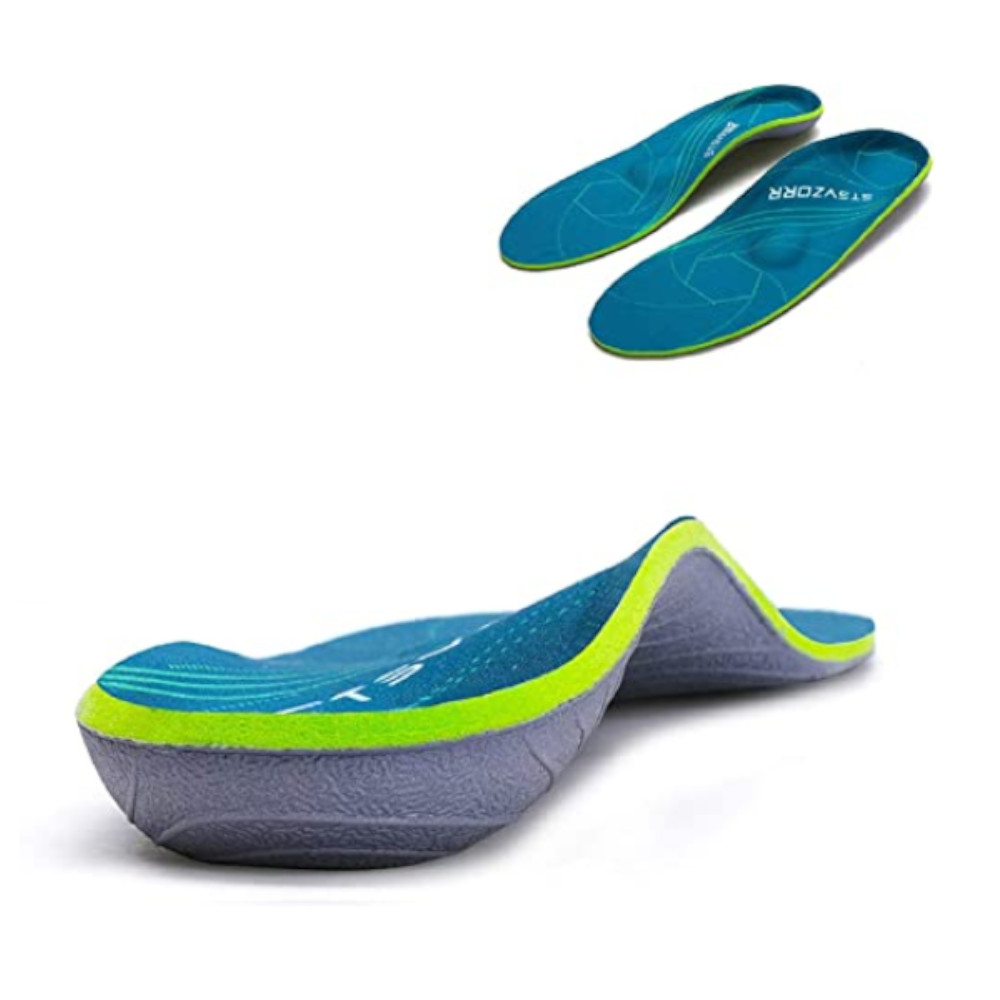How to Stay Active with Plantar Fasciitis: Practical Tips

Featured Products for Plantar Fasciitis Foot Pain Relief
Living with plantar fasciitis doesnt mean putting an end to an active lifestyle. While managing the condition requires care and attention, staying active can still be an integral part of your routine. In this blog post, well explore practical tips to help you stay active while effectively managing plantar fasciitis.
Understanding Plantar Fasciitis and Physical Activity:
-
Choose Low-Impact Activities:
- Opt for low-impact exercises that minimize stress on the plantar fascia. Activities such as swimming, cycling, and water aerobics can provide cardiovascular benefits without putting excessive strain on the feet.
-
Listen to Your Body:
- Pay attention to your bodys signals. If you experience pain or discomfort during or after an activity, modify or choose a different exercise. Its crucial to strike a balance between staying active and avoiding activities that worsen symptoms.
-
Modify High-Impact Activities:
- If you enjoy higher-impact activities like jogging or jumping exercises, consider modifying them to reduce impact. Shorten your workout duration, incorporate intervals, or replace high-impact movements with alternatives that are gentler on the feet.
Footwear and Support:
-
Invest in Supportive Footwear:
- Choose athletic shoes with proper arch support and cushioning. Supportive footwear helps distribute pressure evenly across the foot, reducing strain on the plantar fascia.
-
Use Orthotic Inserts:
- Consider using orthotic inserts or custom-made orthotics to provide additional support and alignment for the feet. These inserts can help alleviate pressure on the plantar fascia during physical activities.
-
Rotate Shoes:
- Avoid wearing the same pair of shoes every day. Rotate between different pairs to vary the pressure points on your feet and prevent excessive wear on one area.
Warm-Up and Stretching:
-
Prioritize Warm-Up:
- Always include a thorough warm-up before engaging in physical activity. Warm muscles and tissues are more pliable, reducing the risk of injury and strain on the plantar fascia.
-
Dynamic Stretching:
- Incorporate dynamic stretching into your warm-up routine. Focus on gentle movements that increase blood flow and improve flexibility in the ankles, calves, and feet.
-
Calf and Plantar Fascia Stretches:
- Perform targeted stretches for the calves and plantar fascia. Regular stretching can help maintain flexibility and prevent tightness that may contribute to plantar fasciitis symptoms.
Cross-Training and Variety:
-
Embrace Cross-Training:
- Introduce variety into your workout routine through cross-training. Incorporating different activities can help reduce the repetitive impact on the feet and provide a well-rounded approach to fitness.
-
Include Strength Training:
- Engage in strength training exercises that focus on the muscles of the lower legs and feet. Strengthening these muscles provides better support to the plantar fascia and can contribute to overall foot health.
-
Water-Based Activities:
- Take advantage of water-based activities, such as swimming or water aerobics. The buoyancy of water reduces the impact on the feet while providing an effective and enjoyable workout.
Recovery and Rest:
-
Allow for Rest Days:
- Schedule regular rest days to allow your body, especially your feet, to recover. Adequate rest is crucial for preventing overuse and minimizing the risk of aggravating plantar fasciitis.
-
Ice Therapy:
- Incorporate ice therapy after workouts, especially if you experience increased inflammation. Applying an ice pack to the affected area can help soothe discomfort and reduce swelling.
-
Massage and Foam Rolling:
- Include massage and foam rolling in your post-workout routine. These techniques can help release tension in the muscles and promote better circulation, aiding in recovery.
Consult with Healthcare Professionals:
-
Professional Guidance:
- Consult with healthcare professionals, including podiatrists or physical therapists, for personalized advice and guidance. They can help tailor an exercise plan that aligns with your fitness goals while considering your plantar fasciitis condition.
-
Regular Check-Ups:
- Schedule regular check-ups to monitor the status of your plantar fasciitis. Keeping healthcare professionals in the loop allows for adjustments to your activity plan based on your ongoing foot health.
Conclusion:
Maintaining an active lifestyle with plantar fasciitis is not only possible but also essential for overall well-being. By making thoughtful choices, incorporating supportive measures, and listening to your body, you can enjoy a variety of physical activities while effectively managing plantar fasciitis. Remember that individual responses to activities may vary, so its crucial to tailor your approach based on your specific condition and seek professional advice when needed.
Featured Products for Plantar Fasciitis Foot Pain Relief
Latest Blogs
- Taking a Stand Against Heel Pain: Practical Solutions
- Happy Heels, Happy Life: Banishing Foot Pain for Good
- The Road to Relief: Strategies for Combating Heel Pain
- Heel to Toe Wellness: Tackling Foot Pain Head-On
- Foot Pain Decoded: Understanding the Signals Your Feet Send
- Soothing Steps: Natural Remedies for Heel and Foot Pain
- Putting Your Best Foot Forward: Managing Heel Discomfort
- The ABCs of Happy Feet: Beating Heel and Foot Pain
- From Heel to Toe: Navigating Common Foot Pain Issues
- Taking a Step Back: Causes and Remedies for Heel Pain
- Footloose and Pain-Free: Tips for Happy Heels and Feet
- Soleful Solutions: A Guide to Alleviating Heel and Foot Discomfort
- Stepping Into Comfort: Understanding Heel and Foot Pain
- From Pain to Progress: Inspiring Plantar Fasciitis Journeys
- Living a Full Life with Plantar Fasciitis: Success Stories
- Plantar Fasciitis and Exercise: Finding the Right Balance
- The Impact of Stress on Plantar Fasciitis Symptoms
- Plantar Fasciitis: When to Seek Professional Help
- Inflammatory Foods and Plantar Fasciitis: What to Avoid
- Ergonomics and Plantar Fasciitis: A Comprehensive Guide
- The Importance of Rest in Plantar Fasciitis Recovery
- Traveling with Plantar Fasciitis: Tips for Happy Feet
- Plantar Fasciitis and Your Sleep: Improving Rest Quality
- The Psychological Aspect of Living with Plantar Fasciitis
- Plantar Fasciitis and High-Impact Activities: Navigating Risks
- How to Stay Active with Plantar Fasciitis: Practical Tips
- Plantar Fasciitis and Aging: Strategies for Seniors
- Cryotherapy for Plantar Fasciitis: Icy Relief for Your Feet
- Aquatic Exercise for Plantar Fasciitis: Dive into Healing
- Mindfulness and Meditation for Plantar Fasciitis Relief
- Heel Pain 101: A Guide to Plantar Fasciitis
- Finding Relief - Plantar Fasciitis Home Remedies
- The Emotional Toll of Chronic Plantar Fasciitis
- Post-Workout Foot Care for Plantar Fasciitis Sufferers
- DIY Foot Massage Techniques for Plantar Fasciitis
- From Diagnosis to Recoveryc- Navigating Plantar Fasciitis
- Plantar Fasciitis in Children Signs and Solutions
- Plantar Fasciitis and Weight: Impact on Foot Health
- How Nutrition Affects Plantar Fasciitis Recovery
- Yoga for Plantar Fasciitis: Poses for Pain Relief
- Breaking Down Plantar Fasciitis Myths and Misconceptions
- Plantar Fasciitis Stretches - Daily Routine for Relief
- The Link Between Plantar Fasciitis and Flat Feet
- Plantar Fasciitis in Pregnancy - What to Expect
- Desk Job Dilemma - Coping with Plantar Fasciitis at Work
- Plantar Fasciitis in Athletes Strategies for Recovery
- Massage and Plantar Fasciitis A Soothing Combination
- Plantar Fasciitis at Night: Tips for Better Sleep
- Plantar Fasciitis vs Heel Spurs - Understanding the Difference
- The Role of Stretching in Plantar Fasciitis Recovery
- Running with Plantar Fasciitis: Dos and Donts
- Preventing Plantar Fasciitis: Tips for Foot Health
- Natural Remedies for Plantar Fasciitis You Havent Tried
- Heel Pain Demystified: Plantar Fasciitis Explained
- Best Shoes for Plantar Fasciitis: A Comprehensive Guide
- Managing Plantar Fasciitis Pain: Tips and Tricks
- The Complete Guide to Plantar Fasciitis Treatment Options
- 10 Effective Exercises for Plantar Fasciitis Relief at Home
- Understanding Plantar Fasciitis: Causes and Symptoms
- Why do I get Pain in My Feet at Night
- Is pain in your feet a sign of diabetes
- What causes pain in my feet
- Plantar Fasciitis - Why so Painful
- What is that pain in my heel
- Should I Walk with Foot Pain
- How to Treat Ankle Pain
- 10 Best Exercises of Plantar Fasciitis
- Do Compression Socks Help Foot Pain
- Do Insoles Work for Foot Pain
- Best Stretches for Plantar Fasciitis
- 5 Causes of Plantar Fasciitis
- Do Back Posture Braces Actually Work
- Foot pain from walking
- Best Insoles for Plantar Fasciitis
- Pain in heel of foot after Running
- Treatment for Pain in arch of foot
- Pain on top of foot
- Mortons neuroma treatment
- How to remove an Ingrown Toenail
- Foot Heel Spur Pain
- Sore Foot in the Morning
- Suffer Heel Pain in the Morning ?
- Start a running routine
- Running through Fatigue
- Best Achilles Tendonitis and Ankle Excercises
- Causes of Achilles Tendonitis and Ankle Pain
- Plantar Fasciitis Cure and Treatment
- Best Plantar Fasciitis Products
- Causes of Plantar Fasciitis and Heel Spur Pain
- Best Plantar Fasciitis Excercises



















